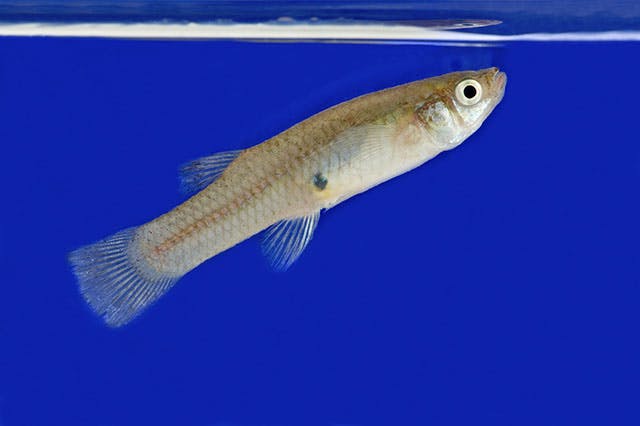About Mosquitofish

Orange County Mosquito and Vector Control District uses mosquitofish (Gambusia affinis) as biological control agents in water sources that can sustain immature mosquitoes. These fish are not native to California, so their use is limited to water sources that do not connect or drain to natural bodies of water. Examples of such sources include unused swimming pools and or spas, ornamental ponds, water troughs, etc.
Mosquitofish are a critical part of the District's integrated approach to mosquito control. Mosquitofish are opportunistic feeders, have a tremendous appetite for mosquito larvae, and are very effective at preventing the production of mosquitoes in isolated water containers or systems that are too large to dump out or easily drain. For example, these fish are ideal for controlling mosquitoes in non-chlorinated, out-of-service swimming pools and ornamental ponds. They should not be used in situations where they might escape into natural waterways and become pests, as all distribution of these fish is regulated by the California Department of Fish and Wildlife.
Advantages of using mosquitofish over other fish in water sources:
- Mosquitofish are specific to consuming mosquito larvae.
- Can inhabit shallow waters and penetrate dense vegetation growth where larvae and pupae hide.
- Survive in a wide range of environmental conditions, such as temperature changes, organic pollution, and poor food supply.
- Easy to maintain.
Mosquitofish biology:
- Maximum size is about 2 inches in length.
- Live 2-3 years, but may exceed this lifespan if conditions are favorable.
- Give birth to live young.
- Produce up to 3-5 broods per year.


